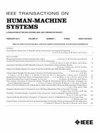基于轨迹的弯道个性化风险预测,考虑驾驶员的转弯行为和工作量
IF 3.5
3区 计算机科学
Q2 COMPUTER SCIENCE, ARTIFICIAL INTELLIGENCE
引用次数: 0
摘要
在弯道上进行准确而稳健的风险预测可以大大减少车道偏离事故,提高交通安全。然而,在风险预测中考虑驾驶员动态相关因素的研究有限,导致算法对个体差异的适应性较差。本文提出了一种新颖的个性化风险预测方法,通过预测车辆轨迹来考虑驾驶员的转弯行为和工作量。首先,进行驾驶模拟实验,收集同步轨迹数据、车辆动态数据和眼动数据。驾驶员通过蓝牙耳机回答问题时会分心,导致认知工作量增加。其次,利用 k-means 聚类算法提取两种转弯行为:驶向弯曲道路的内侧和外侧。然后利用轨迹数据识别每个轨迹的转弯行为。此外,还利用车辆动态特征和眼动特征识别驾驶员的工作量。第三,在长短期记忆编码器-解码器轨迹预测网络中引入额外的个性化指标。该指数整合了驾驶员转弯行为和工作量信息。引入个性化指数后,在预测时间跨度为 2、3 和 4 秒时,拟议网络的均方根误差分别降低了 15.6%、23.5% 和 29.1%。第四,采用风险势场理论,利用预测轨迹数据进行风险预测。这种方法在风险预测中隐含了驾驶员的个性化信息。本文章由计算机程序翻译,如有差异,请以英文原文为准。
Personalized Trajectory-based Risk Prediction on Curved Roads with Consideration of Driver Turning Behavior and Workload
Accurate and robust risk prediction on curved roads can significantly reduce lane departure accidents and improve traffic safety. However, limited study has considered dynamic driver-related factors in risk prediction, resulting in poor algorithm adaptiveness to individual differences. This article presents a novel personalized risk prediction method with consideration of driver turning behavior and workload by using the predicted vehicle trajectory.First, driving simulation experiments are conducted to collect synchronized trajectory data, vehicle dynamic data, and eye movement data. The drivers are distracted by answering questions via a Bluetooth headset, leading to an increased cognitive workload. Secondly, the
k
-means clustering algorithm is utilized to extract two turning behaviors: driving toward the inner and outer side of a curved road. The turning behavior of each trajectory is then recognized using the trajectory data. In addition, the driver workload is recognized using the vehicle dynamic features and eye movement features. Thirdly, an extra personalization index is introduced to a long short-term memory encoder–decoder trajectory prediction network. This index integrates the driver turning behavior and workload information. After introducing the personalization index, the root-mean-square errors of the proposed network are reduced by 15.6%, 23.5%, and 29.1% with prediction horizons of 2, 3, and 4 s, respectively. Fourthly, the risk potential field theory is employed for risk prediction using the predicted trajectory data. This approach implicitly incorporates the driver's personalized information into risk prediction.
求助全文
通过发布文献求助,成功后即可免费获取论文全文。
去求助
来源期刊

IEEE Transactions on Human-Machine Systems
COMPUTER SCIENCE, ARTIFICIAL INTELLIGENCE-COMPUTER SCIENCE, CYBERNETICS
CiteScore
7.10
自引率
11.10%
发文量
136
期刊介绍:
The scope of the IEEE Transactions on Human-Machine Systems includes the fields of human machine systems. It covers human systems and human organizational interactions including cognitive ergonomics, system test and evaluation, and human information processing concerns in systems and organizations.
 求助内容:
求助内容: 应助结果提醒方式:
应助结果提醒方式:


